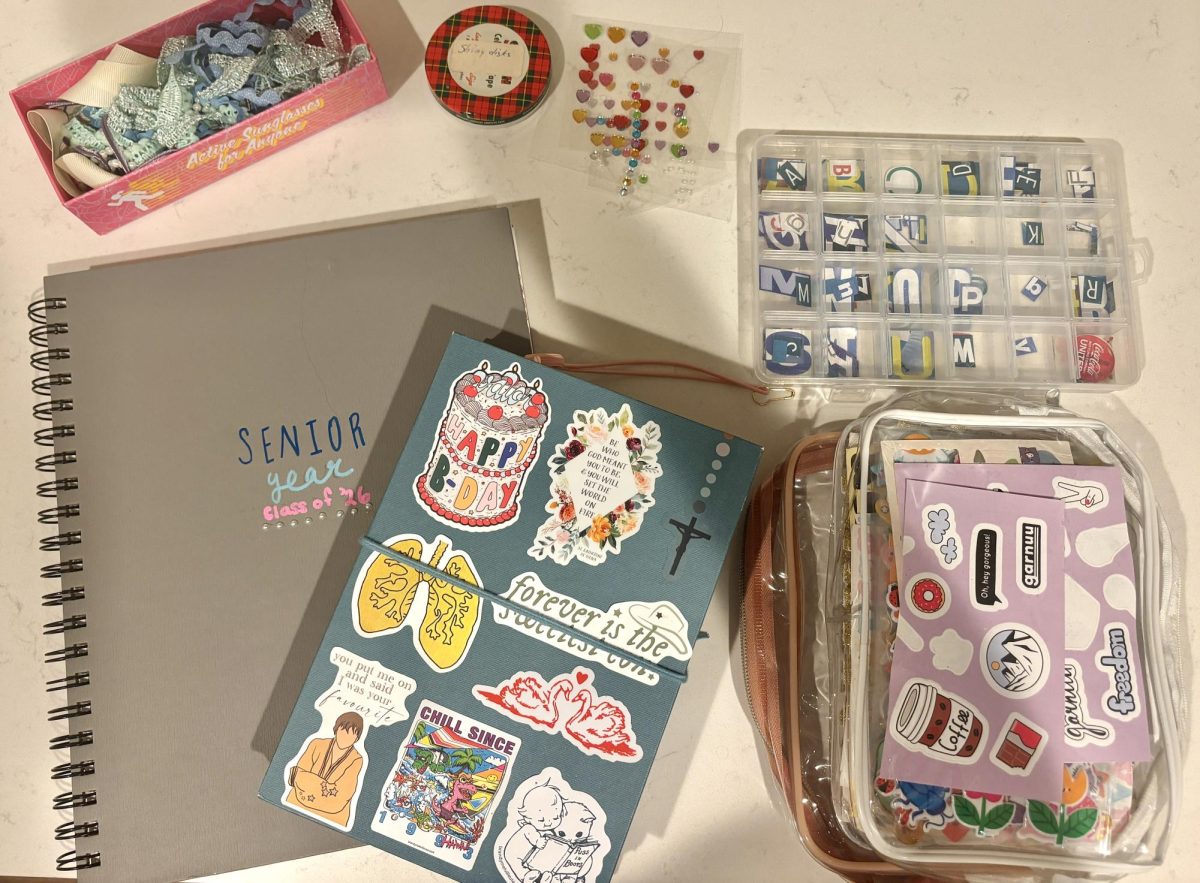A Guide to Acceptance and What it Has Done for Me
January 25, 2022
We have all heard so many people talking about working on their mental health, and I know we might be sick of it, but bear with me, for just one more round of reflections– I promise. I don’t like to frame my personal growth around the idea that it will continue to linearly get better, because it doesn’t consistently do that. I now try to get a little better over time — not always but when I can. I have improved at this skill because– I think– I have found my key to keeping a level head. It’s acceptance. It isn’t perfect, and it doesn’t always work, but it has made my life a lot better. I am working on accepting the way things are, no matter what. However they are placed in my life, I can try to accept them.
This seems impossible. How can you not just get instantly frustrated? How are you able to let things go? What happens when you get blown completely off course? It truly is a difficult thing, but you can master it if you let your brain follow the steps it needs to take.
STEP ZERO: STEP BACK
The preparation step, once you have been faced with an emotional or situational problem, is to step out of the chaos of the situation and breathe and exist outside of it, if you can. This can be taking a moment to breathe, putting away your work, or just letting your brain slow down for a minute. This is important because it helps you to rationalize everything that is going on around you. You can comprehend the situation from an outside point of view.
As an example, let’s say someone was going to take a test in the next class period that they have been worrying about and studying for a while. This beginning step, in this scenario, would be to put away the work in order to look at it objectively and realistically.
STEP ONE: IDENTIFYING IT
Once you have taken a step back, you can take the next step forward, which is to identify what’s happening. You can name your emotions and the components of the situation. It is important to lay out the situation so you can rationalize everything that is going on and see it in a realistic way, and identifying your emotions is a great tool to help figure out what it is that you are reacting to. If you realize your emotion is loneliness, for example, you can better understand the cause of that feeling.
To continue with our example, the person can identify that their feeling is the worry of their grade dropping. The situation is composed of the test, the time that the grade gets put in, and the studying before the test, which cannot be changed now. The layout makes it seem less daunting.
STEP TWO: ACCEPTING IT
After identifying the components of what is happening, you have to accept that it is true and real. Accepting doesn’t need much instruction, but it is a difficult step. This one just takes time, but once you are able to process the way that it is, you can go forward.
In our example, this step could be used to understand that there is no real good way to get out of the test, and our subject will have to take it in the next class period. This helps to get it through their head that it is going to happen and it is a real thing. Processing the reality of what is happening helps them be more in the moment about the thing that is happening.
STEP THREE: WATCH THE CARS GO BY
By now, you can fully understand what is going on. The next thing to do is to understand that your emotions are fleeting. You will not feel like this forever. You might feel like this again, but it won’t last your whole life. You will feel joy, contentment, or just the feeling of calm again. This isn’t the end of it all. My therapist has always told me to, when I get overwhelmed, “watch the butterflies.” The butterflies represent your emotions, and you can see and acknowledge them, as well as let them go.
In the test situation, we can let the emotion of stress go and begin to focus on the test. Letting the emotion go gives us room to think about something else.
STEP FOUR: MOVE ON
Hopefully, by now, you have processed everything and lowered the threat of the emotions you were feeling or the situation you were in. The next part of the skills is to either try and solve the problem or to just continue on to the next thing, if it doesn’t need solving. Now that you have looked at it objectively, it will be easier to find a solution. Or perhaps you realized the problem was in your mind and not outside of you, in which case this may have helped you feel better or you can continue to work through it in your head instead of physically solving something. The tangible issues need real-life solutions, but the acceptance piece can help you find the solution you need for your brain.
In our example, there isn’t much left to fix, so our person can just go in and take the test. If, for instance, they hadn’t studied, that could be a solution they could try to manage. Having a clear head after accepting makes it easier to tackle a new task, and since it is a tangible thing that they can fix, it is important to try and solve it.
A PROFESSIONAL PERSPECTIVE
I talked to my therapist, Dr. Julie Pace, about the whole idea of acceptance, since she is who I learned it from.
She said, “Part of life is being sad sometimes. The goal isn’t to make it stop; it’s to accept it and still move forward towards your goals in a way that aligns with your values and what is important to you.” This is a part of a particular therapy she employs called “acceptance and commitment therapy.”
Another important technique she uses is the idea of dialectical behavior therapy, which has a lot of different components. One specific part of it is helpful to us.
“There are 4 things you can do when you have a problem: change the situation, change the way you think about the situation, radically accept it, or keep feeling bad,” said Dr. Pace.
The radical acceptance piece of this therapy is what I have been using to help myself get over all of the issues, and it is what I have been trying to explain in my writing.
Dr. Pace describes it as more of an “it is what it is” kind of thinking, saying “yes, whatever is happening is real, and I can continue on.”
A DIFFERENT PERSPECTIVE
Some people can use this same method but have it mean something else entirely. I asked my friend Sophia Cheng (‘23), who sometimes sees acceptance as something that keeps her going, but sometimes sees it as a way to get out of dealing with something.
“Accepting how things are is the easy way to deal with things. It makes my brain feel okay, but it’s always only temporarily okay,” said Cheng. “It doesn’t fix anything. [I] just accept that I’m not going to do anything to try and fix it because it seems too hard and I’m too tired.
“[However], pushing it aside like this even though [it’s] temporary still works and keeps me going, so I [still] do it,” said Cheng.
Cheng’s perspective on the idea that acceptance is simply avoidance is something that I also struggle with. I think sometimes getting your mind off of something is what the importance of acceptance is because it lets you move on and not be frozen in a state of worry. However, sometimes just accepting that something is bad and wrong and not doing anything to change it is not ideal. It is important to realize that when something is a tangible problem and not just a thought issue, it does need to go to that step of solving it instead of the step of moving on.
AND SO…
Overall, this method of problem-solving has helped me immensely since I have gotten the hang of it, and I am eager to share it because of how much it has helped. When I am faced with intense emotions, as I often am, I can focus on other things besides only what I am feeling. Accepting that a real problem is real is also important for me because it prevents me from pretending it isn’t real, or getting frozen in a state of stress. I could not be more grateful for this way to frame my thoughts.












